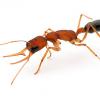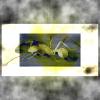Nylanderia has a very pronounced mesosomal constriction just behind the pronotum. In addition to that, as ponerinecat stated, Nylanderia workers have very long, stiff hairs on most of the body, but most noticeably on the pronotal dorsum and surface of the head, while Lasius has shorter, more broadly distributed hairs (though some Nylanderia have dense pubescence as well), giving them a velvety appearance in some species, especially in some of the darker colored species like L. neoniger and americanus.
Aphaenogaster workers are often larger that Pheidole, but in some cases, this is not the best way to distinguish the genera. The best way to distinguish the genera is by looking at the antenna. In Pheidole, a distinct 3-4 segmented antennal club can be seen, while this feature is lacking in Aphaenogaster. If a colony is available, Pheidole always have a dimorphic (rarely trimorphic) worker caste, while most Aphaenogaster are monomorphic, occasionally polymorphic with slight size differences between the workers.
Aphaenogaster can be easily distinguished from Myrmica by their 'saddle-backed' mesosoma, while Myrmica has a flat-backed mesosoma, occasionally with a mesosomal groove. Myrmica are also heavily sculptured throughout, while the sculpturing seen in Aphaenogaster is often restricted to the head, although Aphaenogaster often display granulate sculpturing on their mesosomas, and other species have striations radiating out from the postpetiole connection point on gastral tergite I. Such a structure can be seen in A. mariae, though these striations are often difficult to see.





















